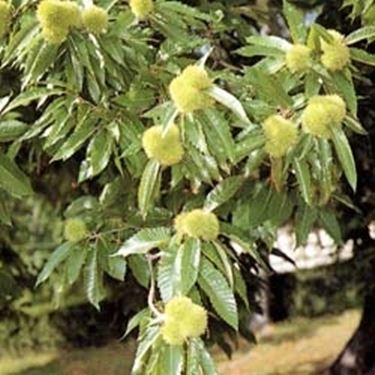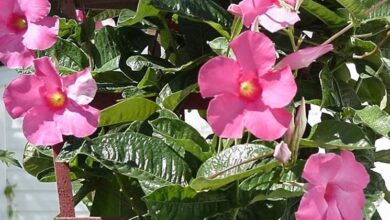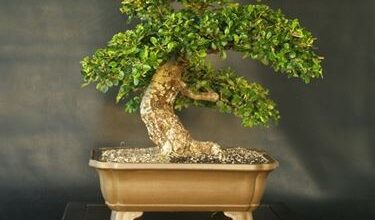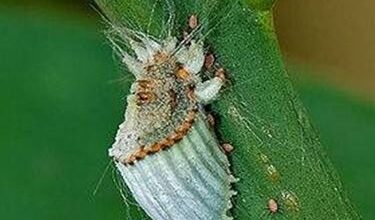Chestnut – Castanea sativa

Generality
Flowering is very late, occurs in June after foliation; pollination is anemophilous.
The fruit is a hedgehog consisting of four valves, containing 2-3 chestnuts that have a variable shape depending on their position inside the hedgehog: the lateral ones are hemispherical while the central chestnut is flattened.
The Japanese chestnut is resistant to the main parasites, ink sore and cancer, it is a small plant, less than 10 m, which easily takes on a bushy appearance.

Climate and terrain
The chestnut prefers hilly and mountainous climates, it can be cultivated at a variable altitude between 400 m and, in southern Italy, 1300 m; it resists harsh winters, down to -20 ° C, while it does not tolerate high summer temperatures. The south, south-east and south-west exposures allow complete illumination of the canopy. The chestnut has a water requirement of at least 700 mm of rain per year. In terms of soil it is a demanding species, in fact it prefers deep, loose, fertile, well-drained and sub-acid soils, while it avoids calcareous, humid and compact soils.
Variety
Fruit cultivars generally have male flowers that produce little pollen, so they need pollinators with abundant pollen production. The varieties are divided into four groups: chestnuts, chestnuts, Euro-Japanese and Japanese hybrids.
The chestnuts are whole fruits, not septate, with the film (episperm) that does not penetrate the inside of the pulp and that comes off easily in the peeling operations; they have a dual purpose: industrial transformation and fresh consumption. They produce large fruits (from 55 to 70 fruits per kg), with excellent organoleptic characteristics and resistant to cooking; they have an upright bearing and go into production after 5-6 years. The chestnuts ripen towards the end of September, the most important varieties are: Marrone di Chiusa Pesio, Marron Buono di Marradi, Caprese Michelangelo, Feltre, Val Sugana, Città di Castello, Marrone di Palazzolo sul Senio, Marrone di Firenzuola and Marrone di Avellino .
The chestnut group includes several cultivars present in the various Italian cultivation areas and, like chestnuts, they originated from Castanea sativa. Chestnuts have different sizes and, unlike browns, are divided by an internal partition. From north to south Italy the following cultivars are remembered: Gioviasca, Garrone (red and black), Castagna della Madonna, Carpinese, Pistolere, Raggiolana and Castagna di Montella.
The Euro-Japanese hybrids were obtained by crosses between the common chestnut and the Japanese one; unlike the previous groups, they resist parasites, have a smaller size, come into production in the third year, have a high size of the fruits having the characteristics of brown, they pollinate each other and are good pollinators of chestnuts and chestnuts. The most important varieties are: Primato, Precoce Migoule, Bournette, Bouche de Betizac and Marsol. Japanese chestnuts are small plants, which come into production from the end of August and the most common cultivars, Tanzawa and Ginyose, pollinate each other.
Cultivation techniques
The chestnut propagates by seed and by grafting, the most valuable varieties are grafted on 4-5 year old francs; rootstocks obtained from Asian chestnuts can be disaffinated with some cultivars. The planting layouts vary according to the size of the plant: 9 X 8 m for European chestnuts and 4 X 3 m for Japanese ones. The Japanese chestnut needs a rational irrigation and annual pruning that allows a continuous renewal of the crown in order to avoid alternating production.
On young plants the excess suckers must be eliminated, while in the case of abandoned chestnut trees, pruning of the rim is carried out by removing the diseased parts. Fertilization is carried out in autumn with mature manure, in March with complex fertilizers and in May by administering nitrogen.




